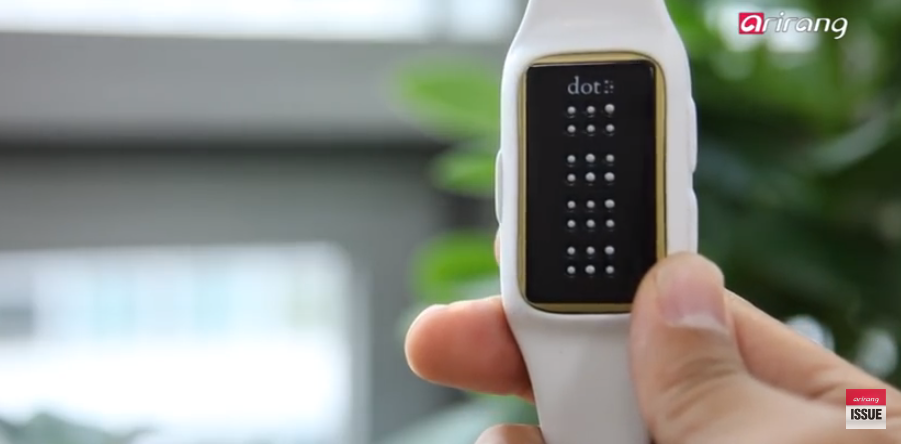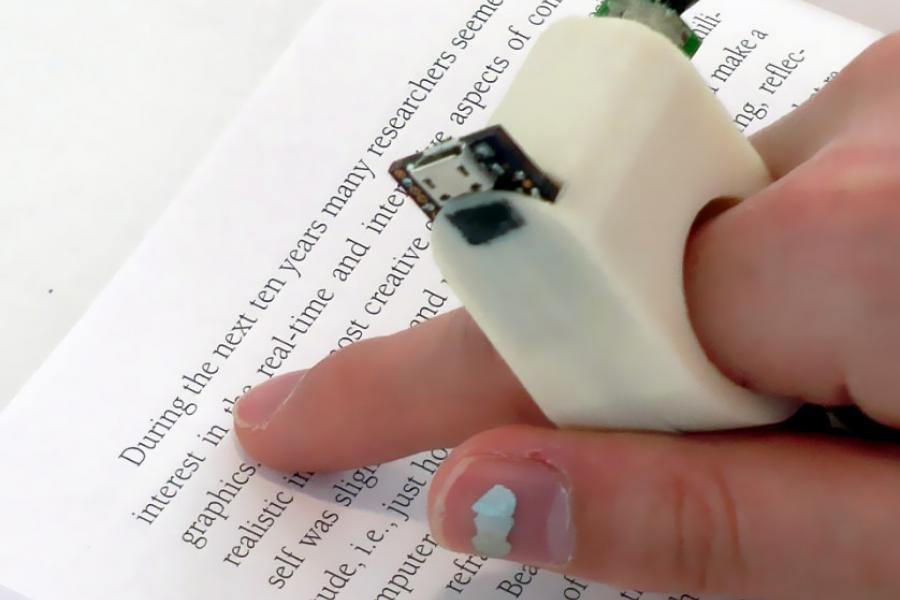An Overview to Life-Changing Assistive Technology for the Blind and Visually Damaged
The innovation of assistive innovation has actually ushered in a transformative age for individuals that are blind or visually damaged, offering devices that improve freedom and enrich daily experiences. Developments such as smart navigation devices and AI-driven applications are redefining just how individuals interact with their surroundings, while easily accessible analysis services and smart home technologies guarantee to more elevate the lifestyle. As these modern technologies remain to evolve, one must consider not just their performances yet likewise their influence on promoting self-reliance and inclusivity. What does this mean for the future of accessibility?
Smart Navigating Equipment
Smart navigating tools are reinventing the means people who are blind or visually impaired interact with their atmosphere. These innovative technologies, which integrate general practitioners, audio responses, and haptic signals, offer users with essential details about their environments, boosting their independence and mobility.
One popular instance is the usage of clever walking canes outfitted with sensors that identify challenges and supply real-time comments through resonances or audio signs. These tools enable users to browse intricate atmospheres, such as busy roads or crowded public spaces, with raised self-confidence. Additionally, wearable tools, such as wise glasses, are being created to assist in recognizing faces, reading text, and identifying objects, even more increasing the individual's spatial awareness.
Moreover, smart navigating tools are increasingly incorporating expert system to evaluate data and adjust to customers' preferences. This tailored strategy not only enhances navigation effectiveness but likewise fosters a sense of empowerment among customers. As technology remains to advancement, the possibility for smart navigation tools to produce a more accessible and inclusive world for people that are visually impaired or blind stays promising, inevitably reshaping their everyday experiences and communications.
Innovative Mobile Apps
Mobile applications are becoming powerful devices for aiding individuals who are visually impaired or blind, using a variety of capabilities that boost daily living. These applications harness progressed technology to help with everyday tasks, boost access, and advertise freedom.
One category of ingenious mobile applications concentrates on visual recognition. Applications like Be My Eyes connect users with sighted volunteers by means of video telephone calls, enabling real-time help for jobs such as reading labels or browsing unfamiliar atmospheres. Applications like Seeing AI utilize fabricated intelligence to describe surroundings, reviewed text, and determine things, providing customers with essential information at their fingertips.
An additional significant location is navigating and positioning. Applications such as Aira and Close-by Traveler give audio guidance, helping individuals navigate city rooms effortlessly. They supply personalized help, permitting for a much more certain exploration of the atmosphere.
Furthermore, health and wellness and wellness apps accommodate details demands, such as medicine administration and physical fitness monitoring. These applications aim to cultivate an all natural approach to wellness, making certain that customers can keep their wellness independently.
Wearable Assistive Instruments
Wearable assistive gadgets represent a considerable innovation in technology made to support people that are aesthetically damaged or blind. These gadgets improve mobility and independence by offering real-time feedback concerning the surrounding atmosphere. Amongst one of the most noteworthy wearable modern technologies are smart glasses geared up with sensing units and electronic cameras, which can identify obstacles and relay important details through audio hints.

An additional innovative alternative includes wrist-worn tools that utilize ultrasonic waves to find barriers and supply navigational assistance. These tools usually feature customizable setups, enabling customers to tailor the alerts to their specific demands.
The combination of expert system in wearable assistive modern technology is also noteworthy, as it continually boosts the precision and responsiveness of these gadgets. Generally, wearable assistive devices are transforming the lives of the aesthetically impaired and blind, cultivating better autonomy and enhancing lifestyle through cutting-edge options.
Obtainable Reviewing Solutions
Accessible reading services play a critical duty in enabling gold glasses frames individuals who are blind or visually impaired to engage with message throughout numerous styles. These services include a variety of tools and modern technologies created to improve analysis experiences, from standard print products to electronic material.
One noticeable remedy is Optical Personality Acknowledgment (OCR) innovation, which converts printed text right into electronic layout, permitting users to pay attention to or read the web content making use of screen visitors. Additionally, specialized e-readers furnished with text-to-speech capacities provide adjustable reading experiences, allowing individuals to readjust font sizes and background colors for enhanced exposure.
Another reliable method is braille screens, which supply responsive feedback by transforming electronic text right into braille. This enables individuals to review touch, fostering greater self-reliance and access to literary works. In addition, mobile applications designed for checking out scanned books or documents can equip customers with instant accessibility to a vast collection of materials.

Smart Home Technologies
Smart home innovations have actually changed the way people that are blind or visually impaired connect with their living atmospheres, enhancing both independence and safety and security. These innovative remedies leverage automation and connection to develop an accessible home tailored to the requirements of individuals.
Smart audio speakers and voice-activated assistants provide hands-free control over different tools, allowing individuals to readjust illumination, temperature, and safety and security actions with basic voice commands. This capability decreases reliance on sighted help and promotes a article source feeling of freedom. Additionally, clever illumination systems can be tailored to supply auditory comments or responsive signs, enabling individuals to navigate their homes better.
Additionally, safety and security systems geared up with smart electronic cameras and sensing units can send out real-time notifies to individuals, boosting personal safety without necessitating visual confirmation. Automated door locks provide assurance, enabling users to safeguard their homes easily.
Integrating smart home innovations not just enhances daily living yet likewise urges social interaction with linked tools - Assistive technology for the blind. With recurring improvements in assistive innovation, the future appears encouraging, as more remedies will certainly arise to additional encourage individuals who are blind or aesthetically damaged, guaranteeing an extra comprehensive and independent way of living
Verdict
In final thought, the innovations in assistive technology for the visually damaged and blind stand for a substantial leap toward boosting independence and lifestyle. Smart navigation tools, cutting-edge mobile applications, wearable devices, obtainable reading solutions, and clever home modern technologies collectively promote an inclusive environment. This integration of modern technology not only boosts movement and daily living but likewise equips individuals to engage totally with their surroundings, advertising greater freedom and engagement in culture.
Developments such as wise navigating tools and AI-driven applications are redefining just how customers connect with their surroundings, while accessible analysis services and smart home modern technologies find out this here promise to further raise the quality of life. As modern technology proceeds to advancement, the capacity for wise navigation tools to produce a much more comprehensive and available world for people who are blind or visually damaged stays encouraging, eventually reshaping their daily experiences and communications.
Wearable assistive gadgets represent a considerable innovation in technology developed to sustain people who are visually impaired or blind. Among the most significant wearable modern technologies are clever glasses furnished with electronic cameras and sensors, which can determine challenges and relay important details with sound signs.
Smart navigating devices, cutting-edge mobile applications, wearable tools, accessible reading options, and smart home technologies collectively cultivate a comprehensive atmosphere.